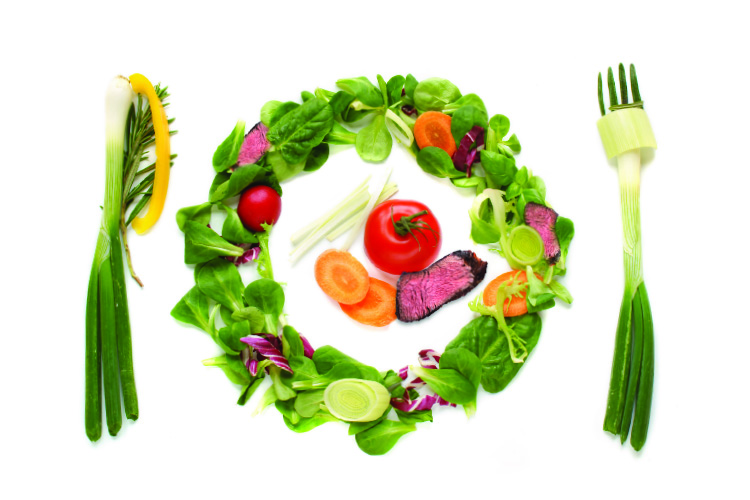Do you know what organic means, and how it applies to you? In the most basic sense, organic means grown or raised naturally. For crops, this means that no chemicals (e.g., pesticides), sewage sludge, radiation, or genetic engineering are used on the product. For organic animal products like eggs, dairy, and meat, there is an additional aspect: the chickens and cows are not given antibiotics or growth hormones.
In addition to the above, organic tends to indicate that the product is grown or raised with Mother Nature’s health in mind, and thus usually includes sustainable practices that will maintain or even improve the quality of the soil such as composting, crop rotation, and choosing plants which are suited to the region.
Organic animals are nearly always raised (and, in the case of organic meat, slaughtered) humanely: organic chickens are cage-free, organic cattle are free-range, and the animals are usually vegetarian to boot.
In short, organic products are better for humans, animals, and the Earth. They don’t contribute to pollution, they promote humane treatment, and they contain only what nature meant for them to have – no chemical residues, growth hormones, GMO or “Frankenfoods.”
The downside is that organic products cost more because they are considerably more labour-intensive. Organic farmers cannot use low-cost shortcuts like pesticides and herbicides; they expend extra effort and time to get rid of pests and weeds naturally (for example, by using natural predators and weeding manually).
To help you get started, we share some tips and pointers in the following pages.
Table of Contents
Organic labeling: Making sense of it all.
Have simple trips to the grocery store become a little complicated lately when it comes to all the labels? Lets see… we have organic, 100% organic AND contains organic ingredients (all different meaning, mind you!), free-range, cage-free, grain-fed, whole-grain, and more! Its all too easy to get confused, and if you do, we don’t blame you for as some might say, many, many labels these days are meant to confuse you into buying the product!
Worry not, for help is at hand! To help you navigate the world of health food terms and catch phrases, here are some important info for demystifying those mysterious labels during your next shopping trip.
Understanding Organic food labels
What do the food labels such as “organic,” “natural” and “free-range,” really mean? Understanding this terminology is essential when you’re shopping for organic foods.
The most important point to remember is that “natural” does not equal organic. Since 21 October 2002, the United States Department of Agriculture, ( USDA), through it’s National Organic Program (NOP) has set up some essential guidelines to ensure that consumers know the exact organic content of the food they purchase. When shopping for imported organic food, look for the “USDA Organic” seal. Only foods that are 95 to 100 percent organic can use the USDA Organic label. It would also be good to keep in mind that “Natural” is an unregulated term that can be applied by anyone. Only the “USDA Organic” label indicates that a food is certified organic. In any case, the following applies:
Single – Ingredient Foods
On foods like fruits and vegetables, look for a small sticker version of the USDA Organic label or check the signage in your produce section for this seal.
The word “organic” and the seal may also appear on packages of meat, cartons of milk or eggs, cheese, and other single-ingredient foods.
Multi-Ingredient Foods
Foods such as beverages, snacks, and other processed foods use the following classification system to indicate their use of organic ingredients.
100% Organic
Foods that are completely organic or made with 100% organic ingredients. May display the USDA seal.
Organic
Foods that contain at least 95% organic ingredients. May display the USDA seal.
Made with organic ingredients
Foods that contain at least 70% organic ingredients. These products are not permitted to display the USDA seal. May list specific organic ingredients on the front of the package.
Contains organic ingredients
Foods that contain less than 70% organic ingredients. The USDA seal is not permitted. May list specific organic ingredients on the information panel of the package.
Other
Products with less than 70% organic ingredients may only list organic ingredients on the information panel of the packaging. These products will not bear the USDA Organic seal.
Eggs
Here’s a type of food that we thought was the simplest to buy. Most of us only know that the better eggs are the ones we call kampung eggs , which we presume are eggs from chickens raised without the use of growth hormones (Visions of chicken roaming freely about in a village come to mind..). However, there are more to know if we really were to separate the good eggs from the bad…
- Cage Free – means the chickens that produced the eggs are free to roam about their barn or housing unit.
- Free Range – means that hens have access (though sometime limited) to the outdoors to forage and roam around*
- Vegetarian-Fed – means the hens have been fed an all-vegetarian diet with no animal byproducts.
- Omega-3 Enriched – means they contain higher amounts of Omega-3s because their diets is rich in seaweed, fish oil and/or fish byproducts, or flax seed oil.
Organic meat and dairy products
Organic meat, dairy products, and eggs are produced from animals that are fed organic feed and allowed access to the outdoors. They must be kept in living conditions that accommodate the natural behavior of the animals. Ruminants must have access to pasture. Organic livestock and poultry are not given antibiotics, hormones, or medications unless absolutely necessary for instance during illness. However, vaccination to prevent diseases are permitted.
The use of Parasiticide (a substance or agent used to destroy parasites) is strictly regulated. Livestock diseases and parasites are controlled primarily through preventative measures such as rotational grazing, balanced diet, sanitary housing, and stress reduction.
The explanations below help decipher the meanings on your meat and dairy products labels.
When it comes to meat, we often see many other terms used other that just organic. Get to know what they mean in order to make informed choices in your purchases.
- Natural – This label merely means “minimally processed” and that the meat can’t have any artificial colors, artificial flavors, preservatives, or any other artificial ingredients in it. For example, this term can be applied to all raw cuts of beef since they aren’t processed. The animals the meat came from could have still be given antibiotics or growth enhancers.
- Grass fed – This term means that the animals were fed solely on a diet of grass or hay. These animals have access to the outdoors. Cattle are ruminants that eat grass, so they tend to be healthier and leaner when fed this way. In addition, grass fed beef has been shown to have more of the healthy omega-3 fatty acids.
- No hormones added – This term is allowed when animals are raised without the use of any added growth hormones. For beef and dairy products it can be helpful, but by law, poultry and pigs cannot be given hormones, so don’t pay extra for chicken or pork products that use this label.
- Free-range – This means that the animals weren’t confined to a cage and had access to the outdoors. Unfortunately, the animal density can still be very high and the animals may have only short periods outside in an area that’s quite small. It is difficult to tell exactly what free-range means when you see it on meat packaging.


















